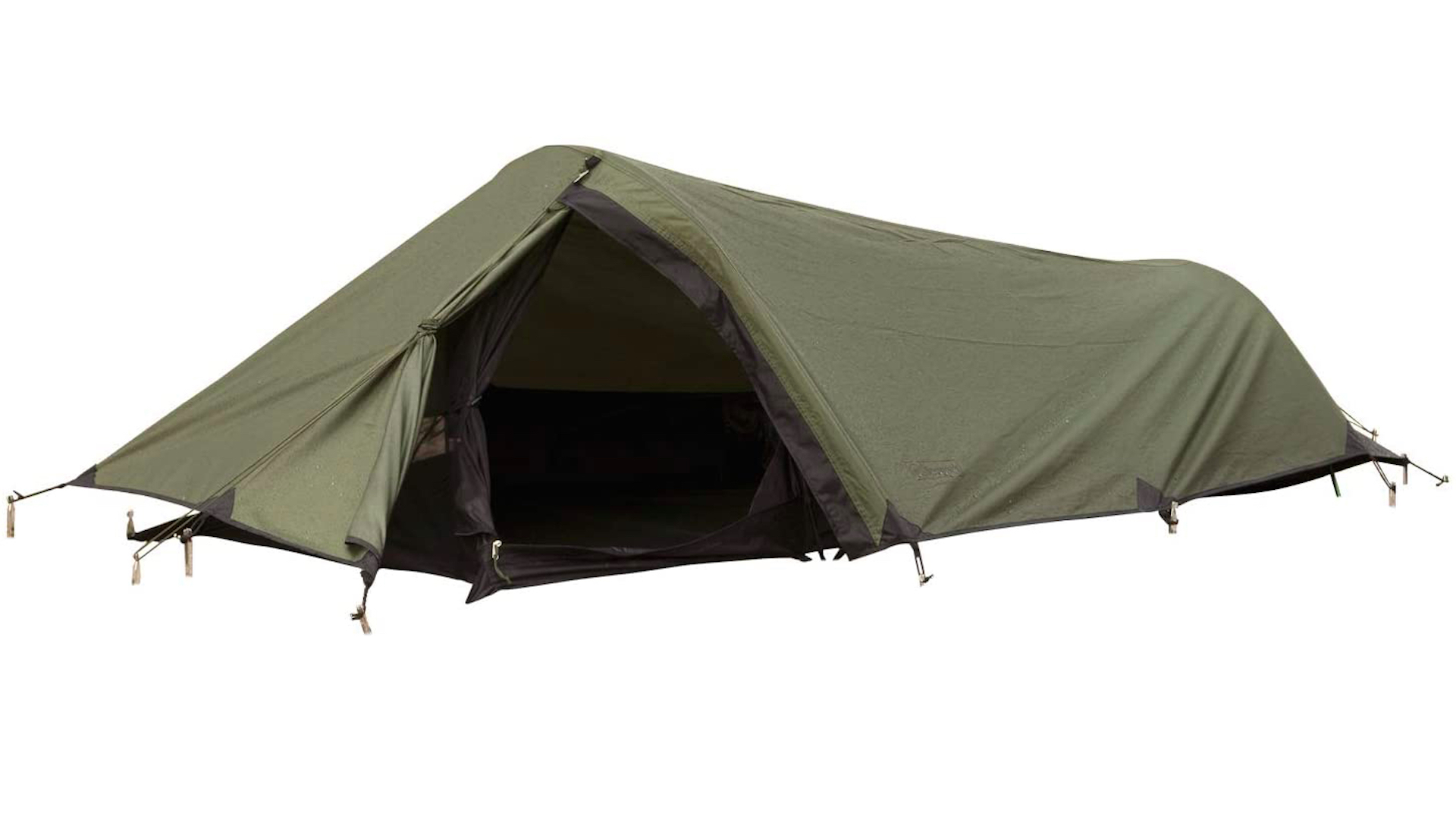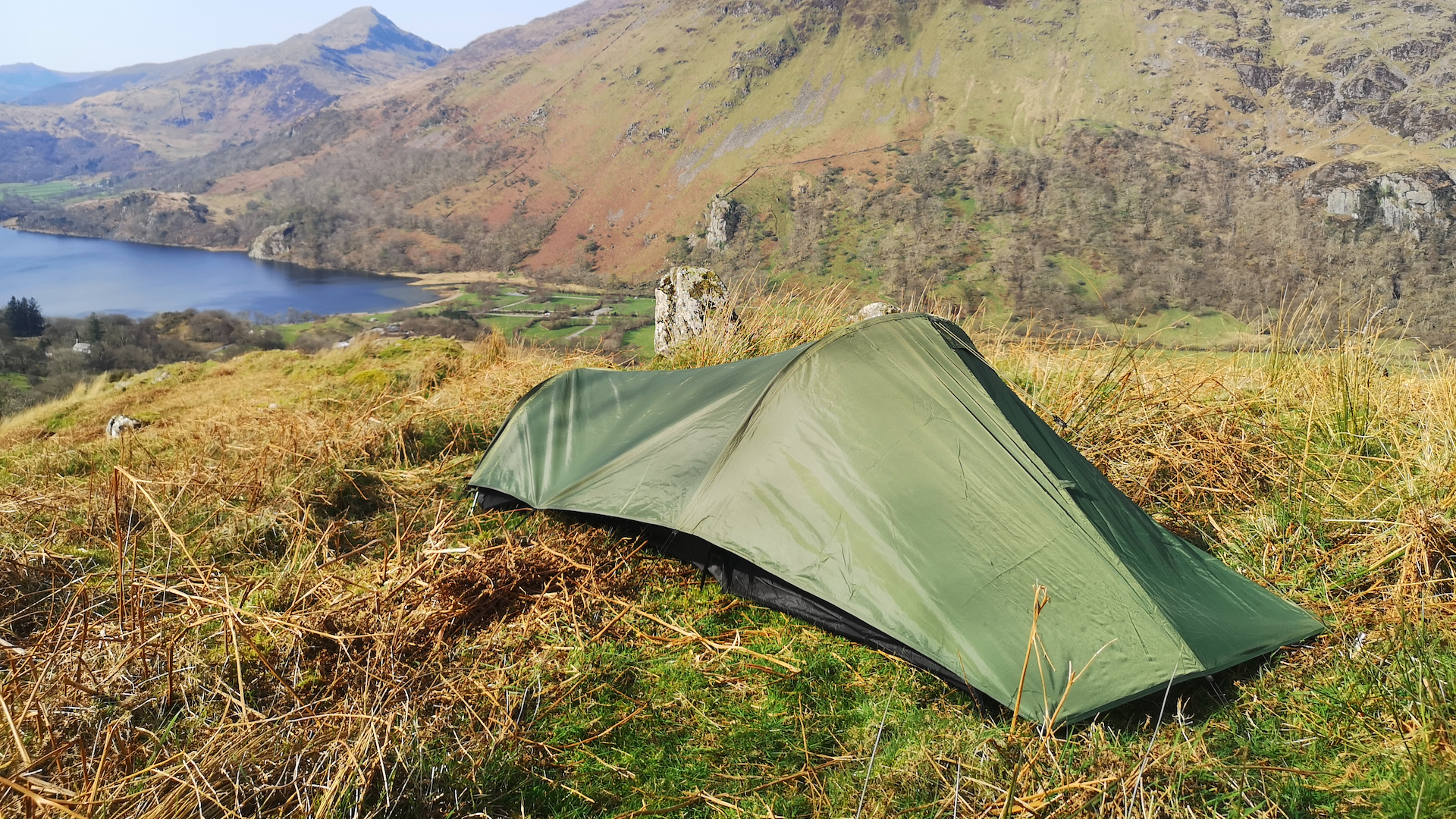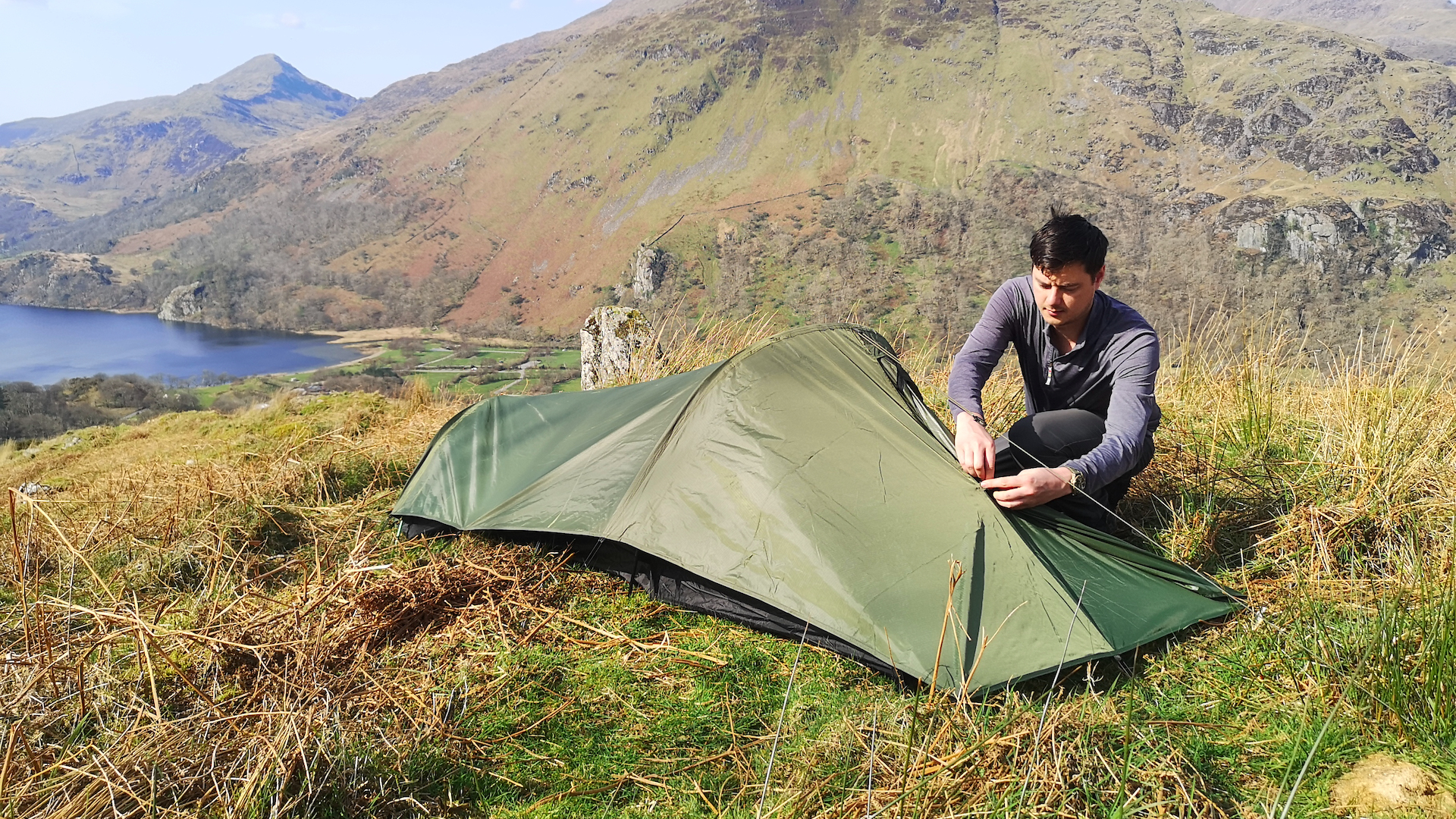Advnture Verdict
A great choice for solo backpackers and wild campers who need a stealthy, surreptitious tent for use in forests, moors and mountains.
Pros
- +
Good interior length and width
- +
Stable, wind-shedding design
- +
Well-priced
Cons
- -
Poor headroom
- -
No porch or vestibule area
You can trust Advnture
Snugpak Ionosphere: first impressions

The Snugpak Ionosphere is a compact solo shelter from a British brand, providing a sort of halfway-house between a one-person tent and a hooped bivvy (see also: One-person tent vs bivy sack: which is best for you?). The low-profile design is very inconspicuous and sheds wind well, making it a practical choice for stealthy wild camps just off the trail or exposed pitches on hills, moors and mountains. The tent is available in two colorways, with an outer fly sheet of either drab olive or a terrain camo pattern, further emphasizing its clandestine credentials.
The two-pole, double-skinned design pitches inner first and is easy to set up. The inner is made of a no-see-um mesh that keeps the interior cool and airy, though it’s important to guy out the fly sheet securely so as to avoid the outer skin touching the inner and causing condensation to drip through. On the other hand, the design means that the inner can be used without the fly as a stand-alone bug shelter in warmer, drier climates, which adds versatility (see also: how to pitch a tent).

Inside, things are a little cramped in terms of head room – you’ll need to crawl in on your elbows and don’t expect to be able to sit upright – but the footprint in terms of length and width is exceedingly generous (you get an interior length of 2.4m, while the inner is 90cm at the widest point). There is plenty of room to sort out your kit or stow a rucksack alongside the sleeping space. You could even sleep two in an emergency situation, or perhaps if competing in adventure races or other multi-day mountain challenges.
Two mesh pockets provide useful quick-access storage too, making it easy to stay organized. The design means there is no porch or vestibule area, though, which might be a deal-breaker for some.
• RRP: £194 (UK)
• Sleeps: 1
• Weight: 1.55kg / 3lb 7oz
• Packed size: 48cm x 14cm / 19in x 6in
• Length: 265cm / 104in
• Compatibility: Three-season backpacking
Snugpak Ionosphere: in the field
On test, the tent performed well, proving to be a sturdy and weatherproof refuge from Snowdonia downpours. The fully waterproof, PU-coated, polyester fly has a high Hydrostatic Head rating of 5,000mm and taped seams, giving plenty of confidence in the Ionosphere’s ability to keep you dry even in the worst weather.
The fact that the tent needs to be pitched inner first might be a disadvantage if you end up setting up camp in the rain, which is why many prefer outer-pitch first or all-in-one style designs. On the other hand, it does means that if you’re not expecting overnight showers, you can just pitch the inner as an airy but insect-proof shelter. That’s a fairly rare occurrence in the UK, even in summer, but common in the US and other countries.
The extended door zip and side-entry fly mean getting in and out isn’t too much of a struggle, though it does require a bit of shuffling. The fact that the fly rolls back and secures with a fabric tab gives you some ventilation on milder nights and means that you can prop yourself up on your elbows to admire the view.
All the latest inspiration, tips and guides to help you plan your next Advnture!

Packed size is also good, making the Ionosphere easy to slide into a hiking backpack, though it’s not the shortest tent around when stowed, thanks to the length of the DAC aluminum poles. Weight is competitive for a double-wall design – admittedly, there are lighter tents around, but they’re typically far more expensive and made from thinner, more delicate fabrics. This is a robust tent that will take a fair bit of punishment, and it’s reasonably priced too. You could also save a fair bit of weight by switching out the chunky Y-beam stakes that are supplied with the tent for lighter alternatives.
All in all, it’s a well-built tent, and though the design has some inherent limitations (namely lack of headroom), it also has plenty of advantages, particularly if you’re pitching up somewhere that requires discretion. The tent’s low profile makes it very inconspicuous, and also means that it sheds wind very effectively.
An outdoors writer and editor, Matt Jones has been testing kit in the field for nearly a decade. Having worked for both the Ramblers and the Scouts, he knows one or two things about walking and camping, and loves all things adventure, particularly long-distance backpacking, wild camping and climbing mountains – especially in Wales. He’s based in Snowdonia and last year thru-hiked the Cambrian Way, which runs for 298 miles from Cardiff to Conwy, with a total ascent of 73,700 feet – that’s nearly 2½ times the height of Everest. Follow Matt on Instagram and Twitter.


